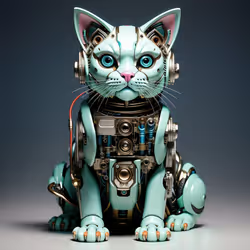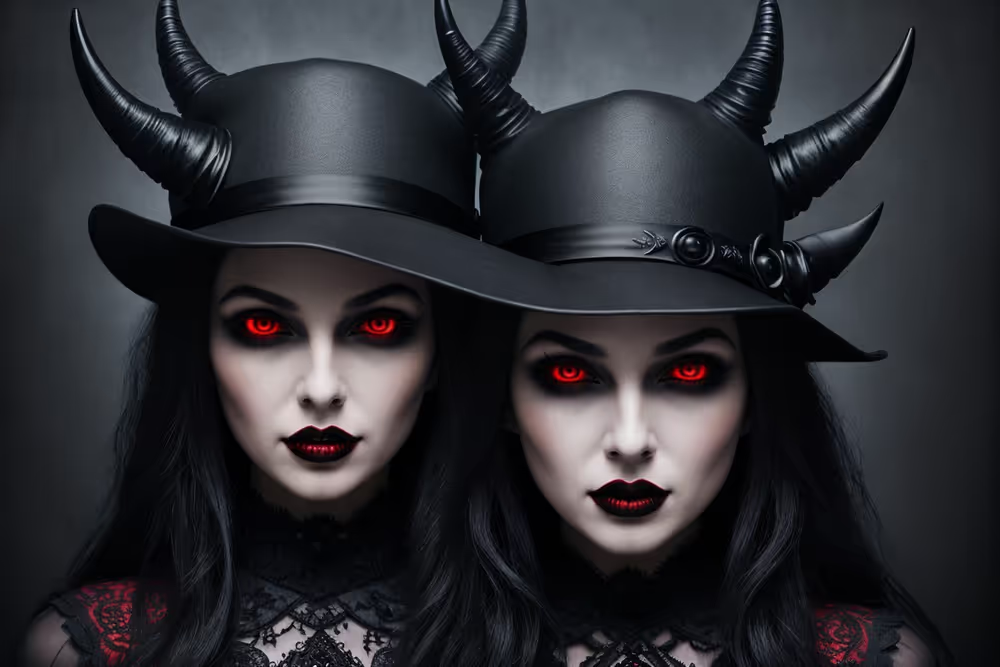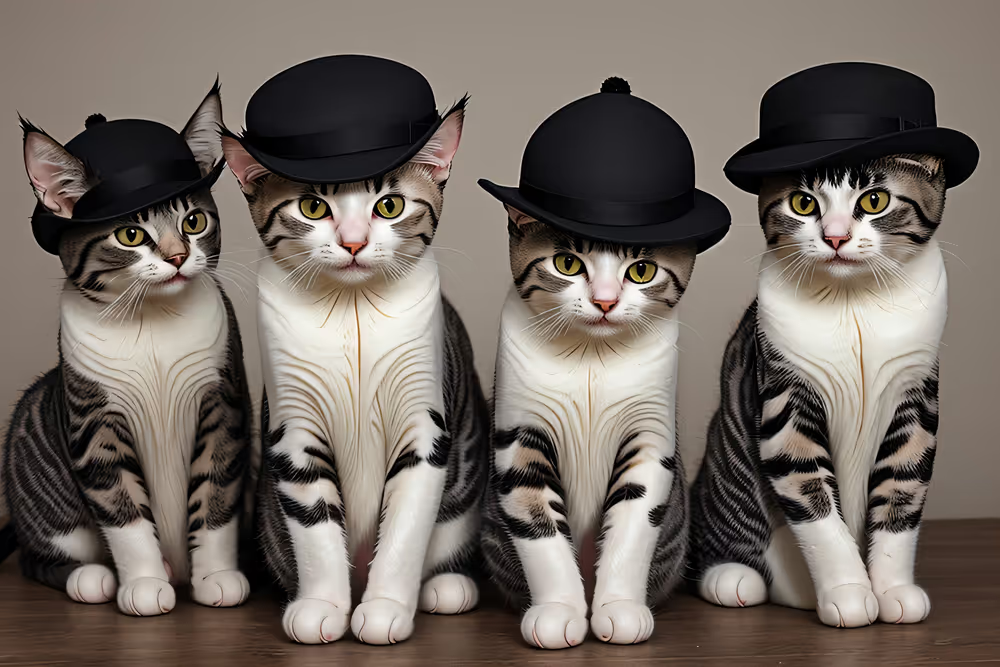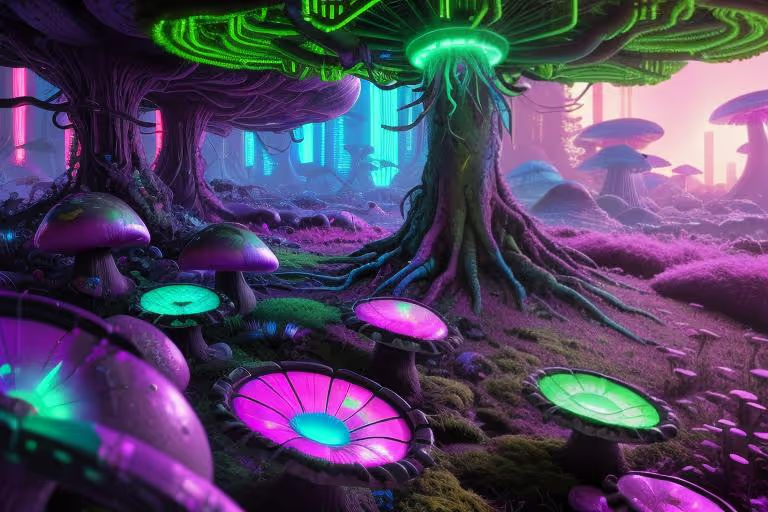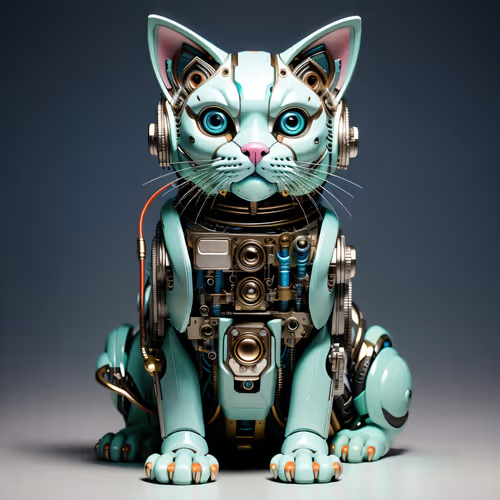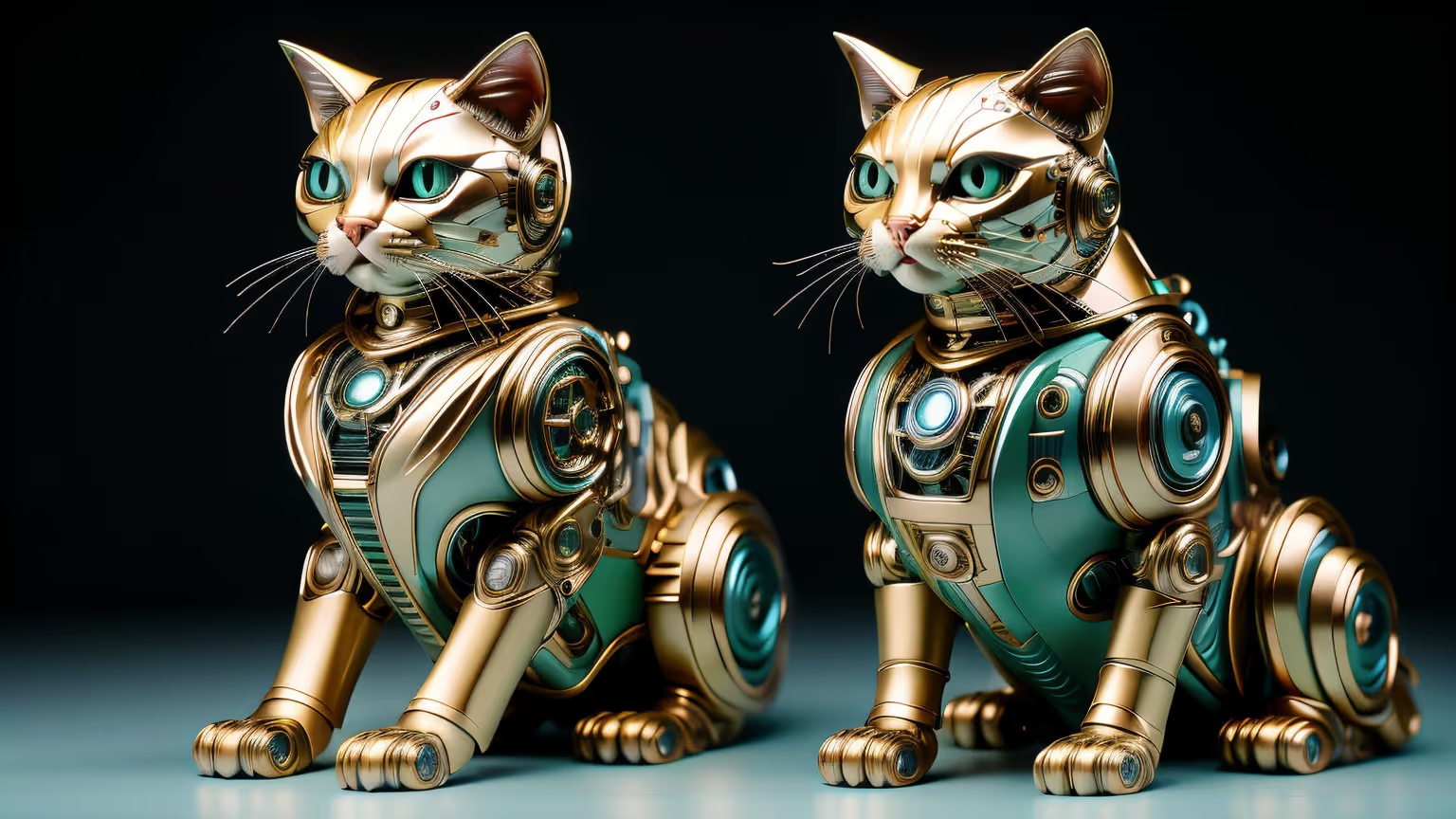
Welcome to the marvelous world of the mechanical cats. Let yourself be whisked away into this mystical world of mechanized cats. If you have a soft spot for cats and also for robotics, then it is only a short way to get to the mechanized mechanical robot cats I am presenting here in the collection. The shown photos combine the real living cat in its appearance with the mechatronics robot, which comes in its appearance as a robotic cat.
As is typical for me, the focus lies always on good, high-quality and friendly photos. As is also characteristic for me, the colors are always matched to the respective object. One will rarely find ugly, blurred, fuzzy or out-of-focus images in the collection. The real and the surreal as characteristics should fade in the eye of the beholder. Reality and fantasy should blur into one another. There should be no limits to your imagination when looking at the marvelous photos.
I hope you have as much fun looking at the fantastic futuristic photos as I had creating these photo images.
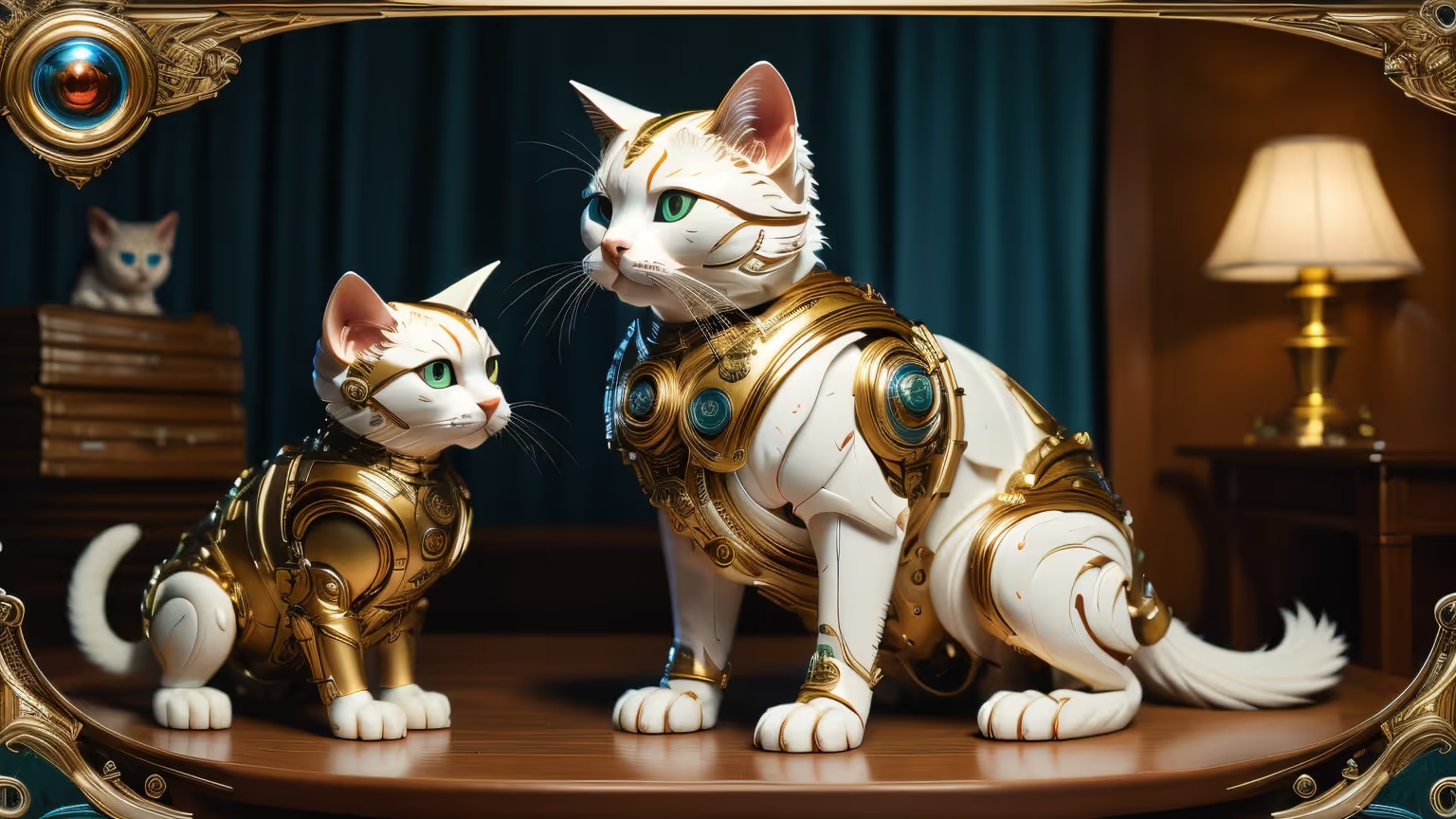
The unique outstanding photos of the mechanical cats in this collection are ideal as collectibles for collecting. Each of the photos is truly unique due to its creation process and there will never be a duplicate of exactly the same photo. The fact that only one item of each photo is minted also makes it really unique in this sense. These photos are a must for every technology and cat lover. New fantastic real as well as surreal mechanical cats will continue to be added until further notice.

This NFT collection can also be seen as an art gallery. Like many other art galleries in the world, it has a theme. The theme of this one is the mechanical cat. A visit of the collection invites one to keep discovering new aspects in a photo. As the images were created using Generative Artificial Intelligence, they are also a reflection of current technical possibilities in some areas. In particular, they invite the viewer to see whether the image is a real photo or a photo generated by Generative Artificial Intelligence. This is not always easy to find out.

My presented photos here fall under the umbrella term of digital art. I am not taking part in the current discussion about what falls under the term art or digital art. In my eyes, every creative achievement is a kind of art, no matter how you arrive at the presented result. I always try to breathe a certain timelessness into nearly all of my images. Sometimes this works better, sometimes this works worse. In the end the art work should be timeless in a way, so that they can still be enjoyed today and the day after tomorrow.

All photos as well as images in the collection and all illustrations in this overview were created using Generative Artificial Intelligence without exception. This shows impressively how powerful Generative Artificial Intelligence is and how well it can be used in digital image creation. Relatively speaking, very good results can be produced very quickly in a short time frame.

All photos in this collection were created using Artificial Intelligence (AI). The so-called Generative Artificial Intelligence (GAI) opens up completely new creative possibilities in art, digital art, image creation and image design. The Generative Artificial Intelligence generated images of today's technology must be seen as a really new form of digital art. Digital Art or Computer Generated Art, which also makes use of Artificial Intelligence, has a long history an has been around for a very long time, beginning in the early ages of computer technology. However, the level nowadays that has been reached is quite impressive and unprecedented. And the development of this technology is far from over.
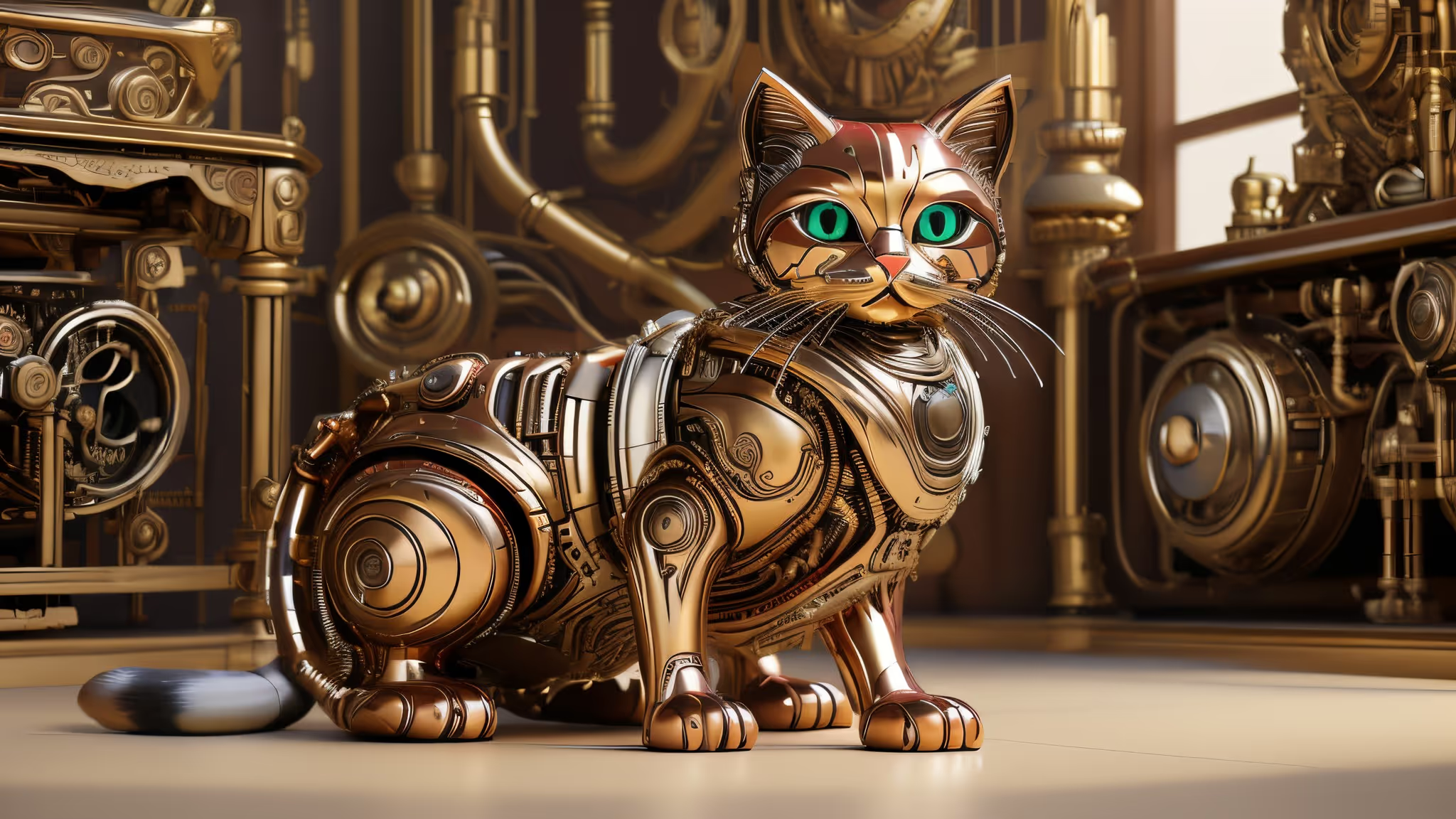
All artificial intelligence generated photos were created locally on my own hardware set up for this purpose. I built a test computer rig for this and installed and configured the necessary software I wanted to use. I used the same hardware and software for all the images in this collection. I have not modified the AI Generator or the AI Web UI in the software. Due to my own local installation, I am currently subject to some limitations compared to online services or cloud services for AI image generation. Nevertheless, the results speak for themselves.

I made sure that each photo of a mechanical cat is as anatomically correct as possible. I allowed myself a little few artistic freedom. Accordingly, deformed and malformed mechanical cats do not appear in the photos. The background of each photo is always bokeh, misty or blurred. The backgrounds are monochrome, but can sometimes be multicolored. The brightness varies from light to dark. The range of visible technical elements varies widely.

The photos in the collection are truly unique and cannot be reproduced. Due to the settings selected during the generation process and in particular the random seed, it is not possible to reproduce the image without knowing all of the input parameters. Even I am not able to do this, if I have not noted down all the necessary information. As long as I have the unenlarged original image, I can theoretically also make a reproduction of each photo. Based on personal my experience, without knowing all of these necessary information, as mentioned before, I am able to create similar images but never exactly the same photo.
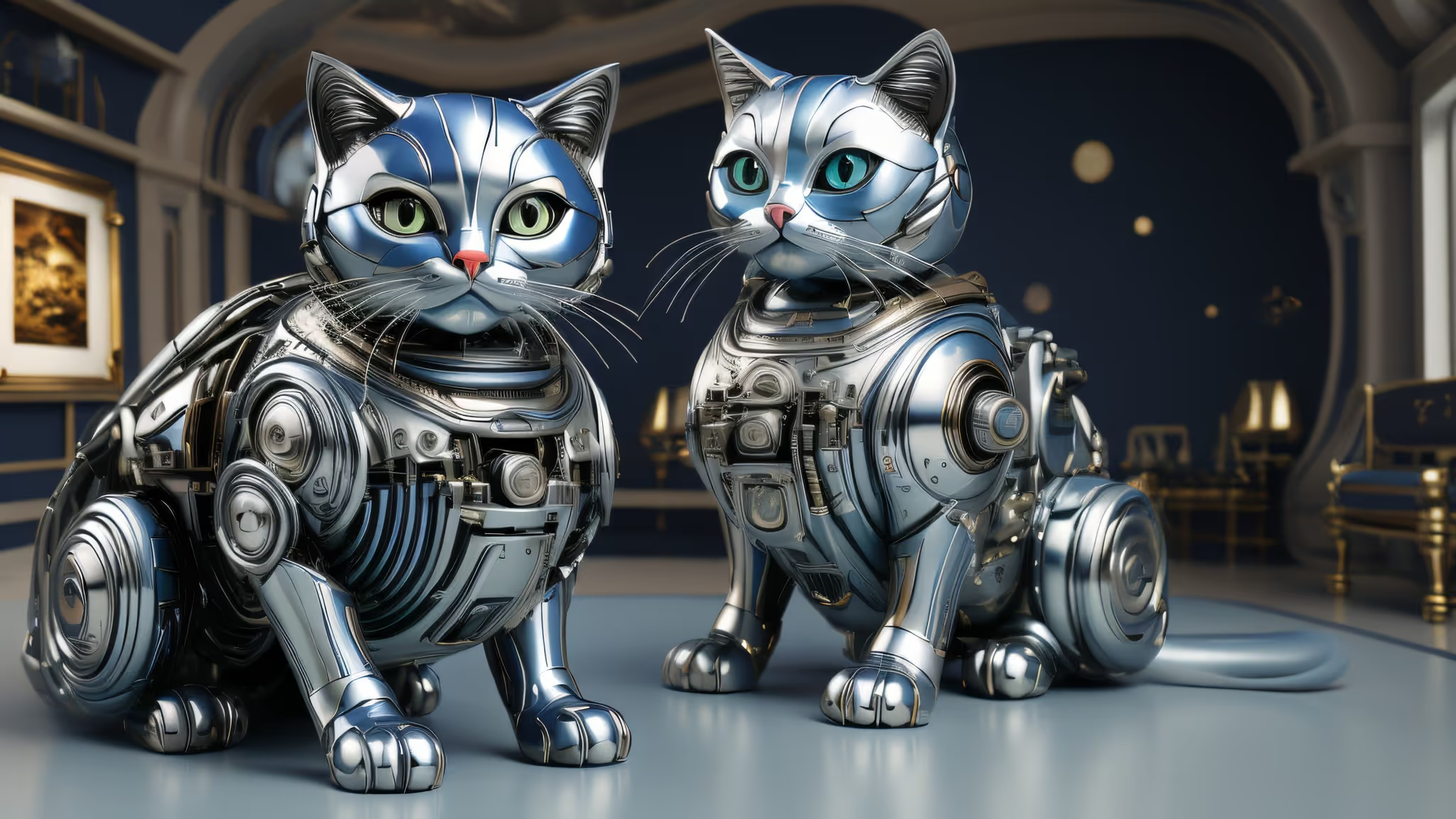
In principle, state-of-the-art generative artificial intelligence can be used to create photorealistic images. This statement is relative and in principle correct. If you look very closely at the state of the art, you can very often find small to large errors in images that ensure that the image cannot be recognized as a real photo. Sometimes, however, the generated image is so good that it is almost impossible to tell that it was created by artificial intelligence. Due to the technology behind generative artificial intelligence, it is not always possible to create truly photorealistic images that would pass as such, no matter how closely you look at them. With a few exceptions, all photos or images in the collection can be categorized as photorealistic. As always, exceptions prove the rule.

In Generative Artificial Intelligence, everything begins with a so-called Prompt. This is nothing more and nothing less than a text that describes what is to be seen later in the image. Generative Artificial Intelligence is briefly spoken image generation based on text to image. The given text is interpreted by the artificial intelligence generator in a suitable way. This sometimes works well and sometimes less well. You can see from the photos in this collection that it works well. Art of this kind is the art of the right Prompt.
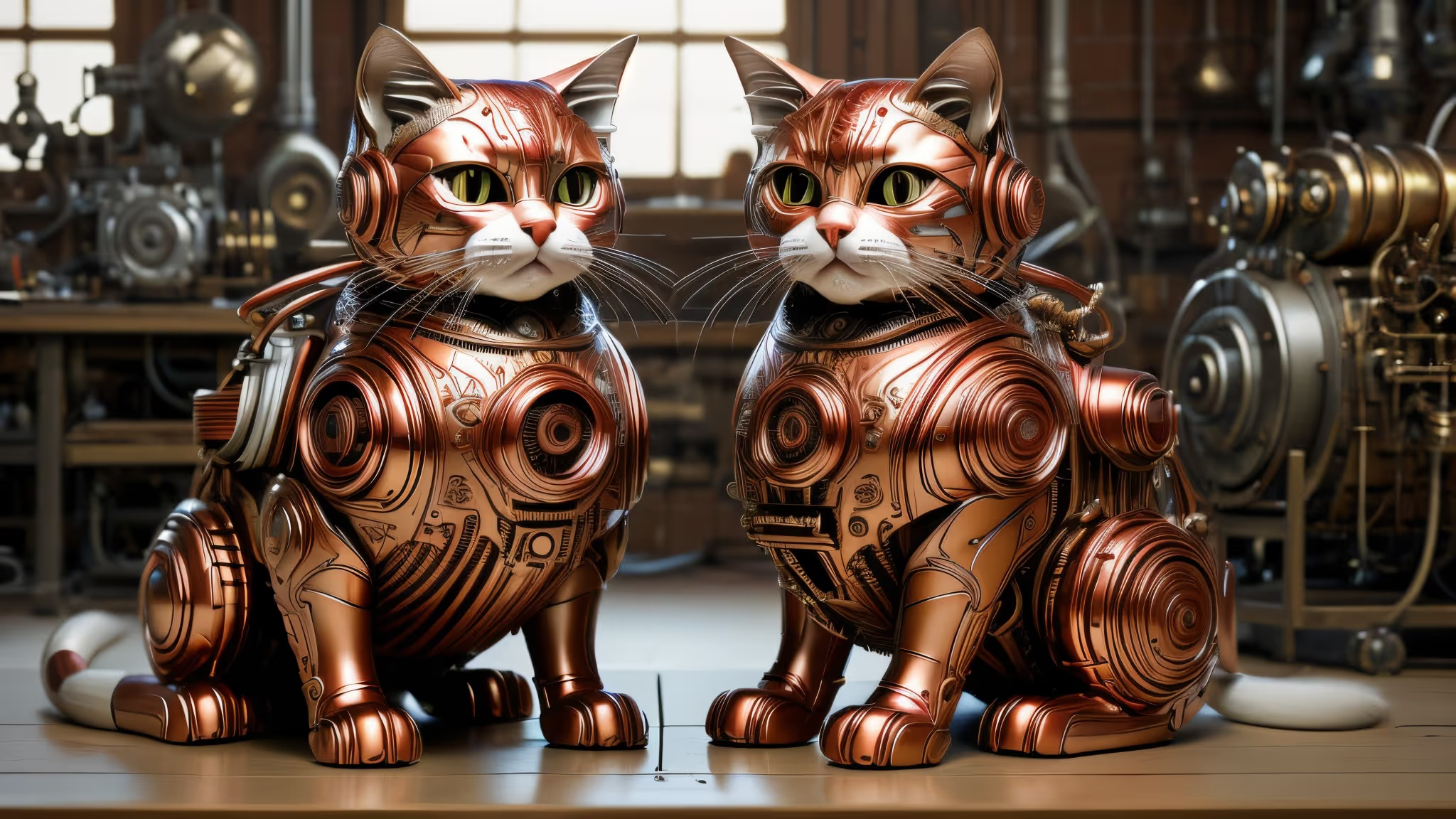
Image generation usually takes place in two steps. First, a relatively small, low-resolution image is generated on the hardware in a memory-intensive way. While creating the the image the hardware limits the final resolution of the created image. In the next step, the image is upscaled using the same hardware to the desired size and resolution. Upscaling is not so critical in the hardware requirements than the image creation.

The file format in the collection used is always JPG or JPEG. In the sense of this manner, the file types JPG and JPEG describe exactly the same thing. JPG or JPEG is a compression file format which accompanied by a loss of quality. The compression rate (quality) is given in percent, often in a range from 75% up to 95%. However, as a rule the difference in the given quality is hardly noticeable to the viewer. The respective quality in percent in which a image file was saved is indicated in the traits of the NFTs.

Each photo of this collection has the same properties, like orientation, aspect ration and resolution. The orientation is square, the aspect ratio is 1:1 and the resolution is 8192 x 8192 pixel. The resolution is measured in megapixel 67.1 MP.

The current state of the art in the field of generative artificial intelligence requires an oversight of the generation of images. In order to generate the desired image in the desired quality, it is necessary for the human to examine the image carefully. Regardless of ethical and legal problems, effects occur that may not be desired. Digital artifacts in images are a well-known problem. In addition, text fragments and graphic fragmente are occasionally found in images that are undesirable. Another problem are anatomically incorrectly created bodies such as cat bodies or human bodies. This results in deformities, too many body parts and body parts that have no connection to the body. In addition, artificial intelligence image generation has a problem with sharply defined details in some areas.
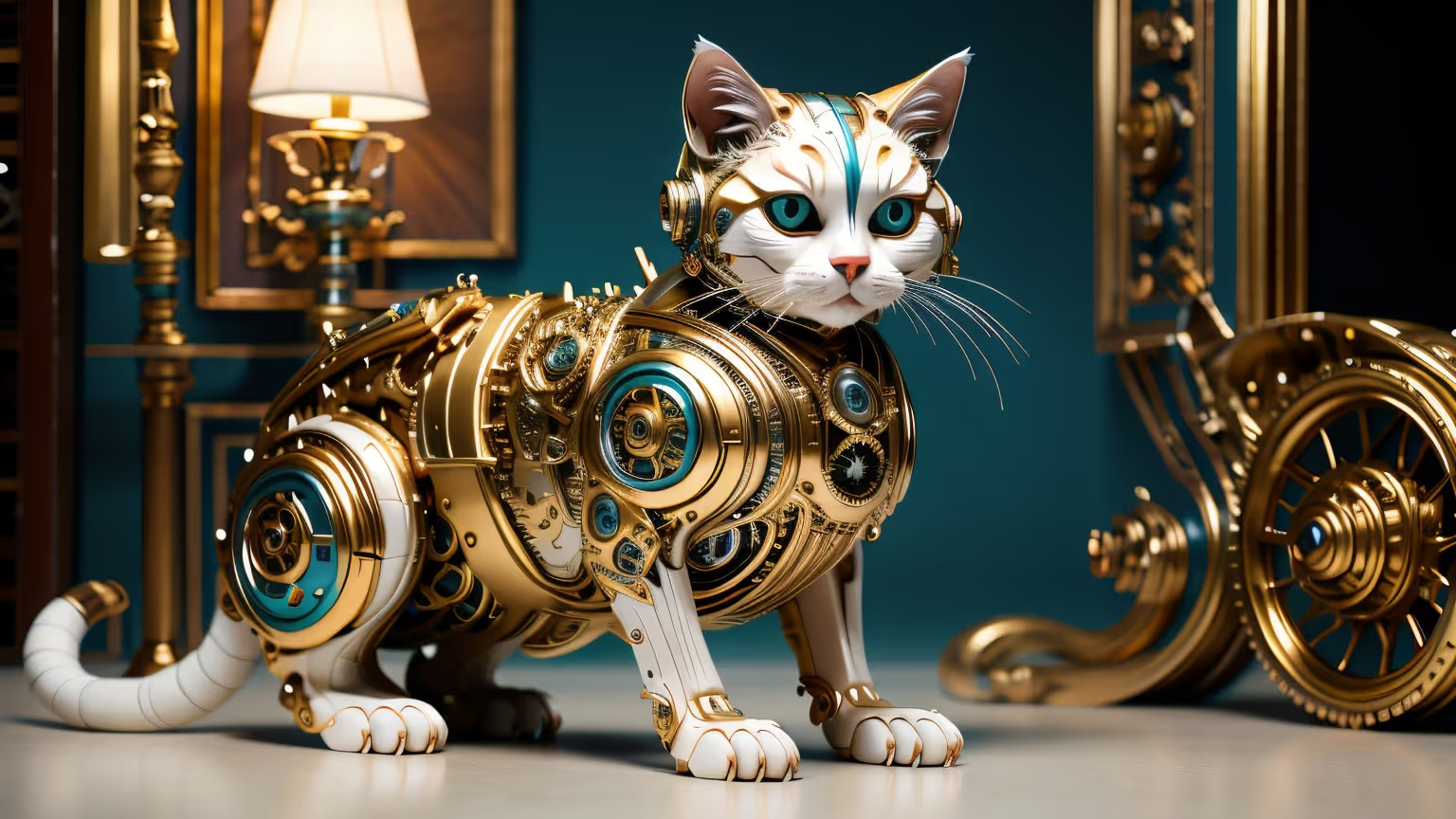
The human being always has the last word in my pictures. I do not create NFTs without careful checking, neither for myself nor for others. Errors in images should be avoided as far as possible, as far as the human eye can detect them.
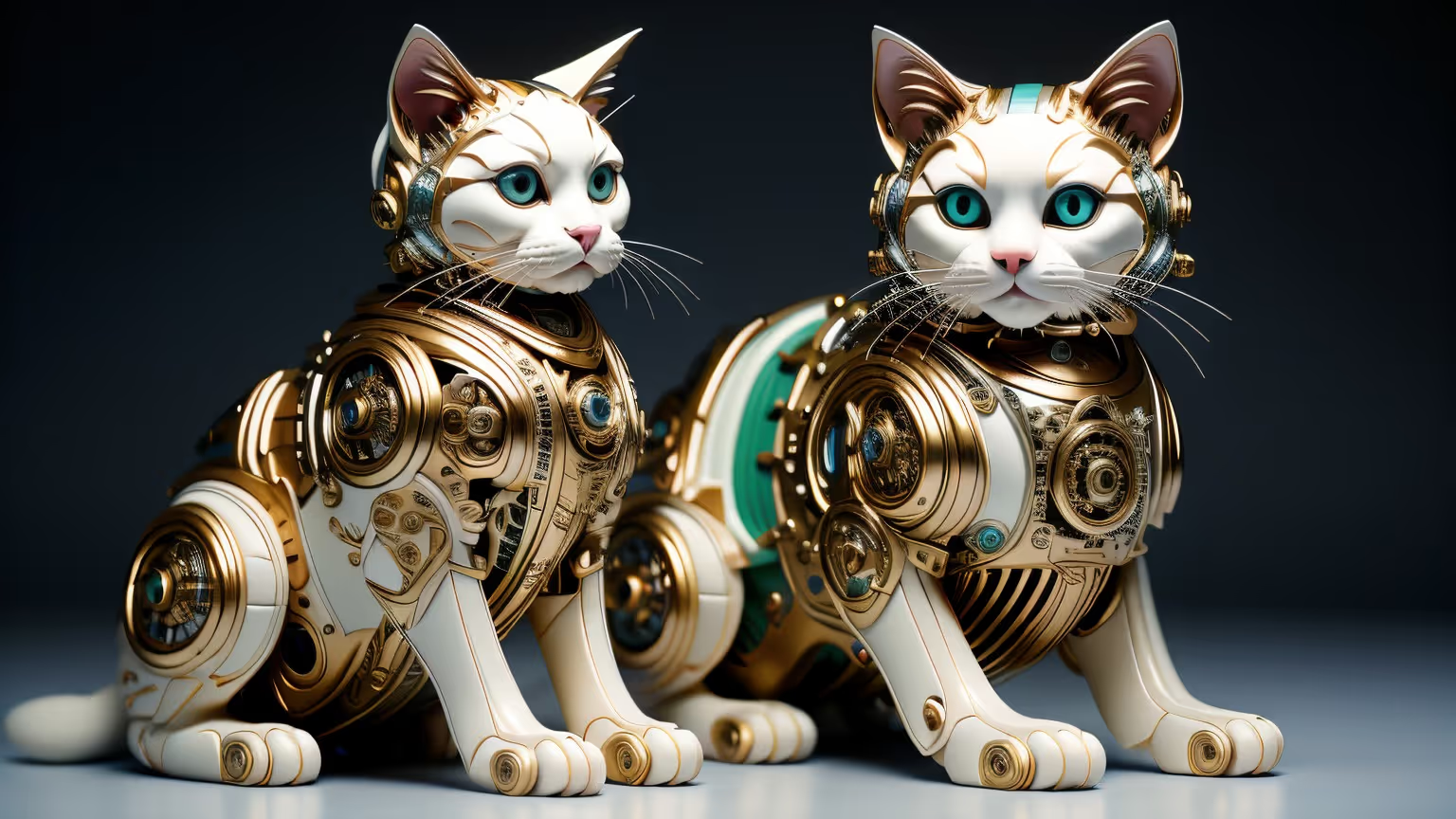
If you like the photos I create, I would be very pleased if you would support my extraordinary work. You can do that easily by buying an NFT of your choice. I use the proceeds from the sale of my AI-generated images, here and elsewhere, to buy new hardware and pay for other consumables. They also enable me to generate more beautiful images of good and high quality. Thank's in advance.
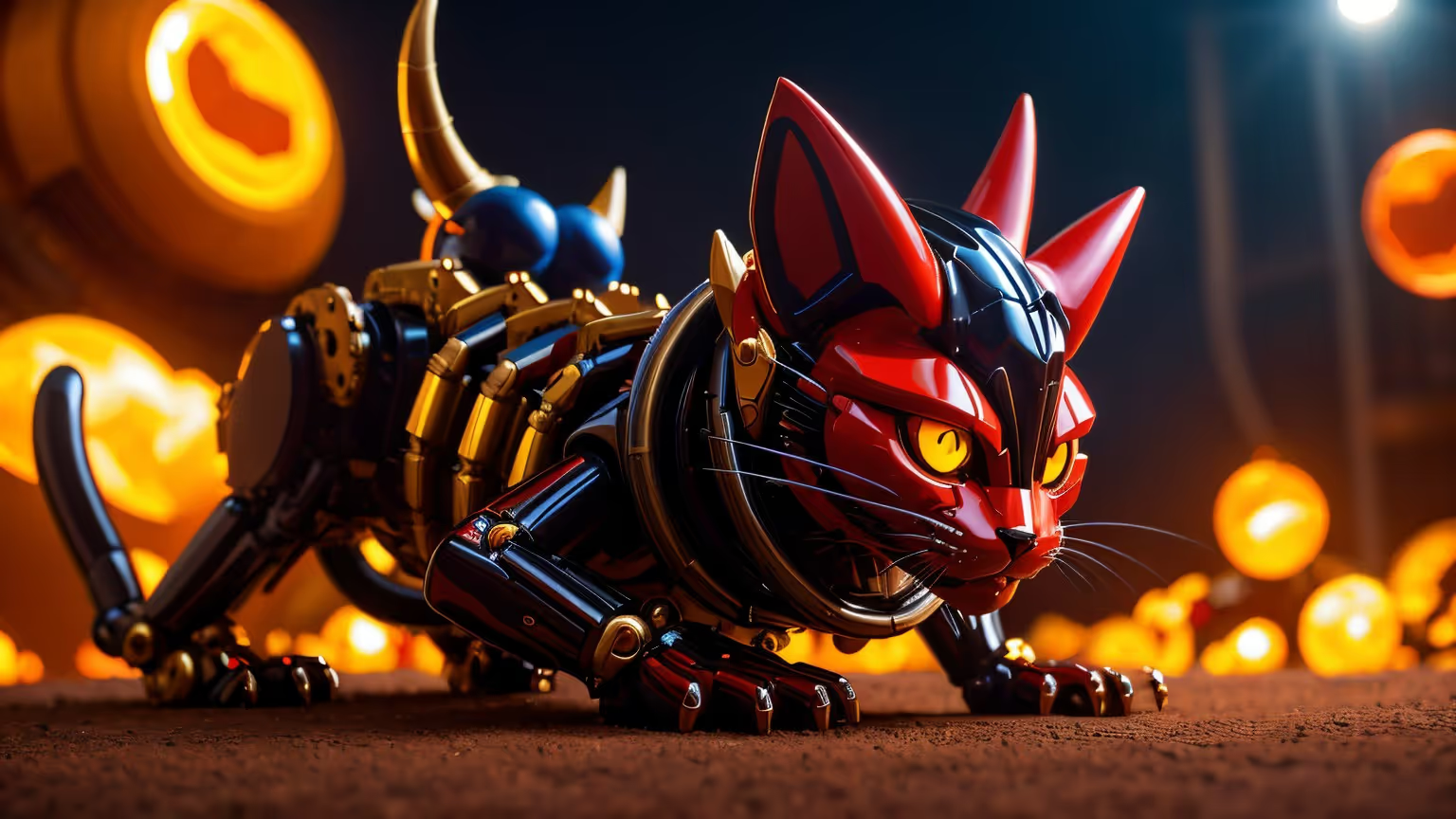
Despite thorough work, a mistake always creeps in. This happens rarely, but unfortunately it does happen. Since I basically create the photos by hand, just as I mint the NFTs by hand, this is prone to errors. It really does not help that I work semi-automatically. There is still a residual risk of errors. I apologize for this.

I am an artist, image creator and designer as well as a free-thinking freethinker.
For over 30 years I have been involved in the creation and post-processing of photos, images and graphics of all kinds.
I am an artist, image creator and designer as well as a free-thinking freethinker.
For over 30 years I have been involved in the creation and post-processing of photos, images and graphics of all kinds.
